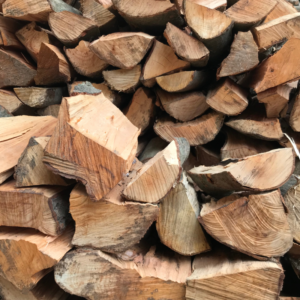 You’ve had yourself a merry little Christmas… and now you’re wondering what to do with your Christmas tree.
You’ve had yourself a merry little Christmas… and now you’re wondering what to do with your Christmas tree.
…a Christmas tree does NOT make the list of safe fuels to use in your fireplace or wood stove.
Having a wood-burning fireplace in your home is an asset, and in this case might seem like a convenience, too. You need a steady supply of firewood anyway, and your fireplace seems suited to burning your Christmas tree, which is made of, well, wood. However, it’s important to know that a Christmas tree does NOT make the list of safe fuels to use in your fireplace or wood stove.
Why Can’t I Burn My Christmas Tree?
🎄Christmas trees have sap.
Popular varieties of Christmas trees are evergreens such as firs, spruces, and pines. These are rich in sap and resin, which burn with ferocity. Needles, too, (especially dry needles) burn quickly and intensely. This intensity can cause a blaze that’s very difficult to control and contain.
🎄Christmas trees produce sparks.
The intense heat and large number of sparks produced increases the likelihood that some sparks will escape – either into the room housing your fireplace or up your chimney. In either case, the risk of an uncontained fire is heightened.
🎄Christmas trees aren’t seasoned.
Finally, since your Christmas tree hasn’t been seasoned, you run the additional risks that come with burning wood with an improper moisture content.
🎄Christmas trees invite buildup.
Unseasoned wood invites creosote buildup. Creosote is a dark substance that amasses in your chimney when burning wood. It’s unsafe and highly combustible – meaning that if you have built up creosote and are also inviting intense heat and sparks from an improper fuel source, you’re exponentially increasing the risk of a chimney or roof fire.
🎄Christmas trees burn too hot.
Sudden high temperatures also puts items surrounding your fireplace in danger of combustion. Normal safe clearance for placing items around your fireplace – think curtains, home decor, and rugs – is three feet, but a fire that’s too hot is a risk to anything close by. The abundance of sparks that can be produced by flammable, lightweight materials such as pine needles additionally increase the risk of uncontained fire inside your home.
What Is Seasoned Firewood?
Not all woods are equal when it comes to fueling a fire. To use your fireplace properly – with safety, warmth, efficiency, and system maintenance in mind – the only appropriate fuel for your fireplace is well seasoned firewood. This means that some things that might seem suitable, such as treated, sealed, or painted wood, composite wood products, and – you guessed it – your Christmas tree, aren’t.
Seasoned firewood is firewood that’s been cured for optimal burning. When freshly cut, wood has a high water content. Curing it basically involves drying it over time to an ideal moisture level so it burns at the right temperature. Many species of wood work as firewood, but all need to be seasoned to burn hot, efficiently, and cleanly.
- cut to short lengths, split, and stored with the ends open to circulating air and sun help reduce the water content over time
- relatively much lighter in weight than wet wood
- when cut, have substantial cracks
- have a reading of 15-25 percent on a moisture meter
You’ll want to store your firewood properly – off the ground and sides uncovered – to keep it from retaining moisture or becoming damp or moldy. Once seasoned, firewood remains usable for up to three years.
What Are the Risks of Burning Wet Wood?
The risks associated with inadequately seasoned firewood (aka – your Christmas tree) come from the fact that the wood burns incompletely. Energy from the fire is diverted into burning off moisture in the wood, and this incomplete combustion yields the following undesirable effects:
✓ cooler flue gases
✓ greater smoke production
✓ increased creosote accumulation.
These effects can make your fire less pleasant – as anyone who’s tried to enjoy a smokey fire knows – but they also make it more dangerous. Gases that aren’t carried out of the flue can enter your living space, and these (as well as smoke) can compromise the quality and safety of the air you’re breathing.
We’re Here for You
To start your new year safely, keep your Christmas tree – and other trappings such as packaging and gift wrap – out of your fireplace. Using your fireplace properly and keeping it well maintained will ensure you the warmth and enjoyment of a cozy, clean fire for many years to come!
If you have any questions about fireplace use or want to schedule your next routine chimney sweep, give us a call at 901-483-5113 or reach out to us online.
Here’s to keeping you safer and more comfortable all season long – and into 2023.


Recent Comments